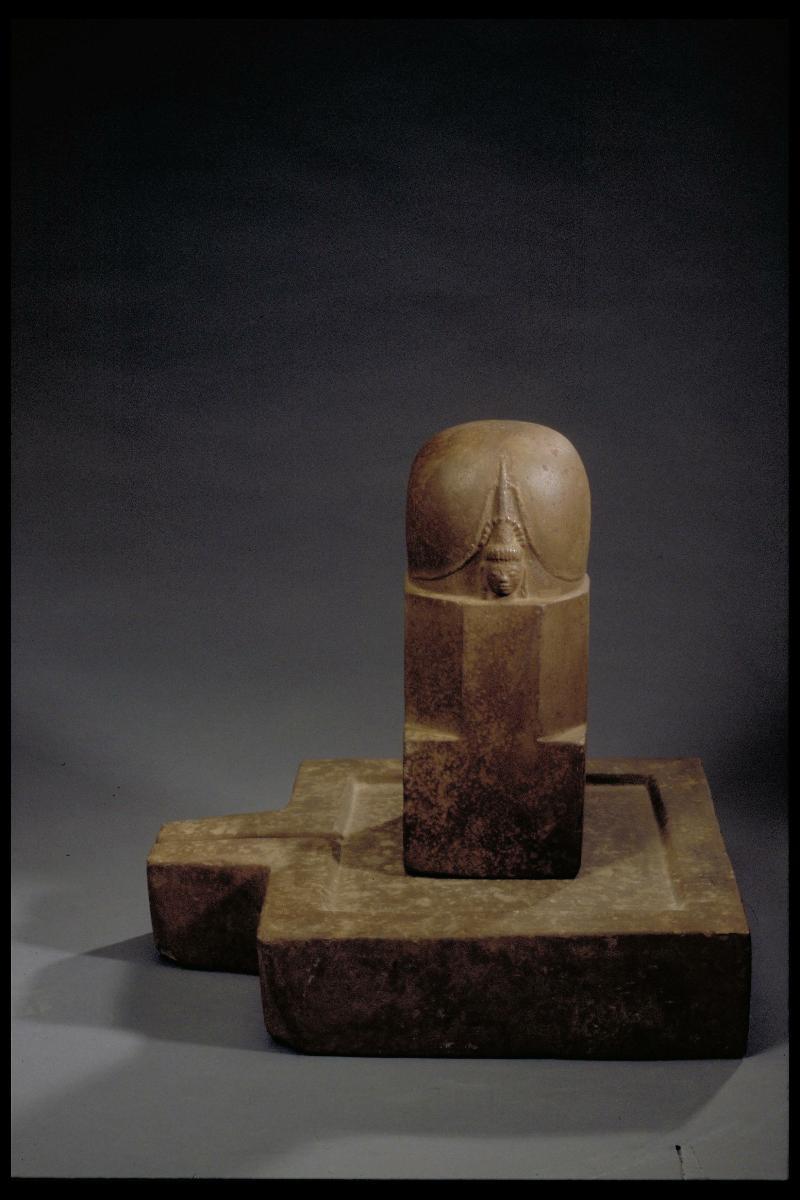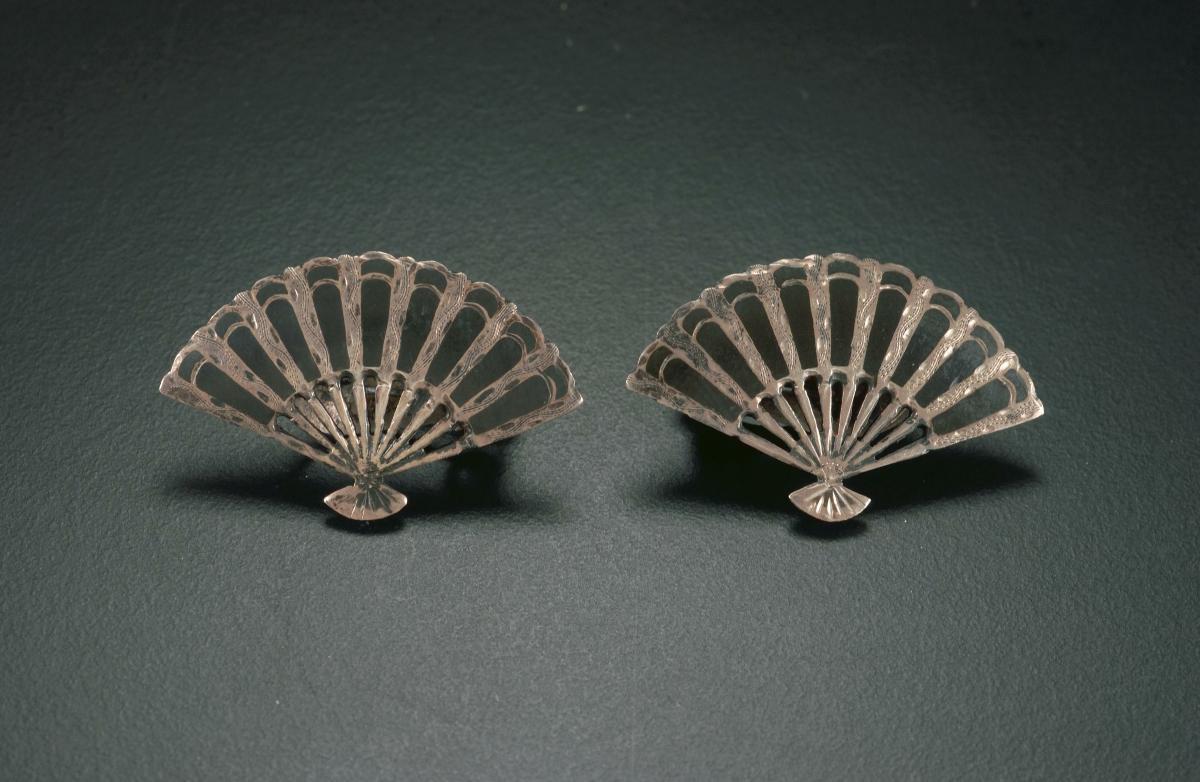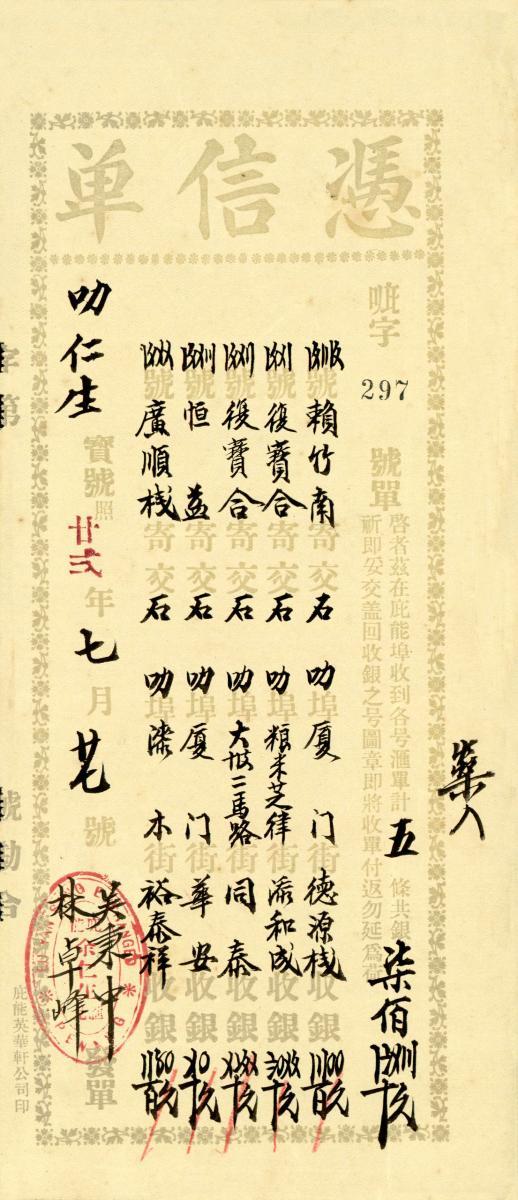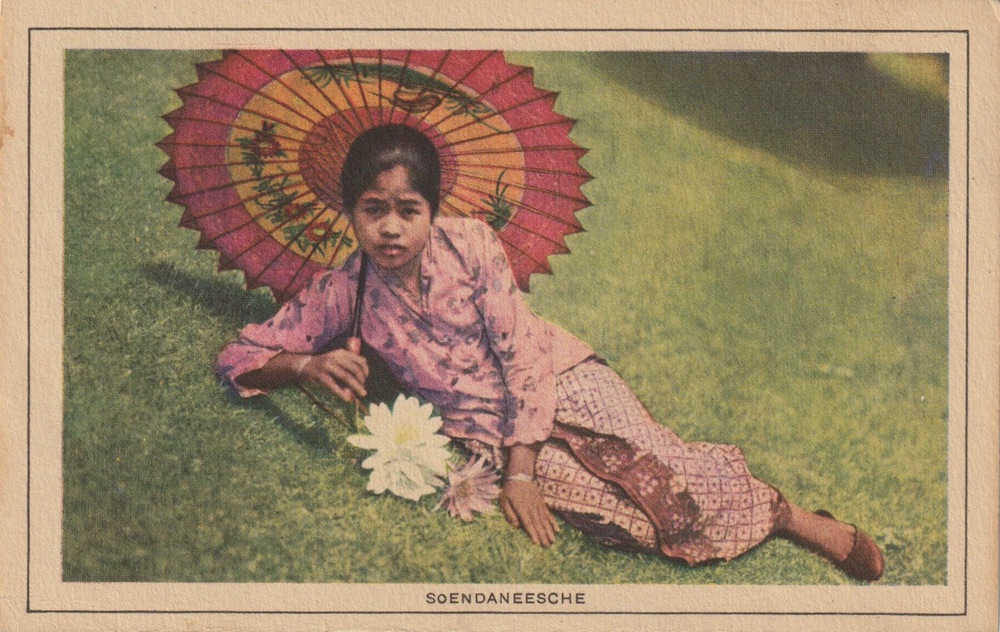Object size: 001: L:52.0 x W:41.0 x H:11.0
The ‘lingam’ (literally ‘sign’ or ‘mark’) is the symbolic image of Shiva. It typically comprises of a square base representing Brahma, an octagonal mid-section representing Vishnu and a round top, representing Shiva. It is set into a rectangular base or ‘yoni’, symbol of the female principle, which has an ablution channel to allow sacred offerings that were poured over the lingam, to flow out toward the north of a shrine. The carved relief on one side, depicts the face of Shiva, or ‘mukhalingam’ (literally ‘face of lingam’), portrayed with a ring of flames surrounding the head and an extended ‘jatamukuta’ or chignon of hair. India exerted great influence during this period as Hinduism and Buddhism were introduced by travelling monks and merchants. One of the earliest Sanskrit inscriptions was found at the site of Oc Eo, in the Mekong Delta region where this lingam was thought to be from.


















